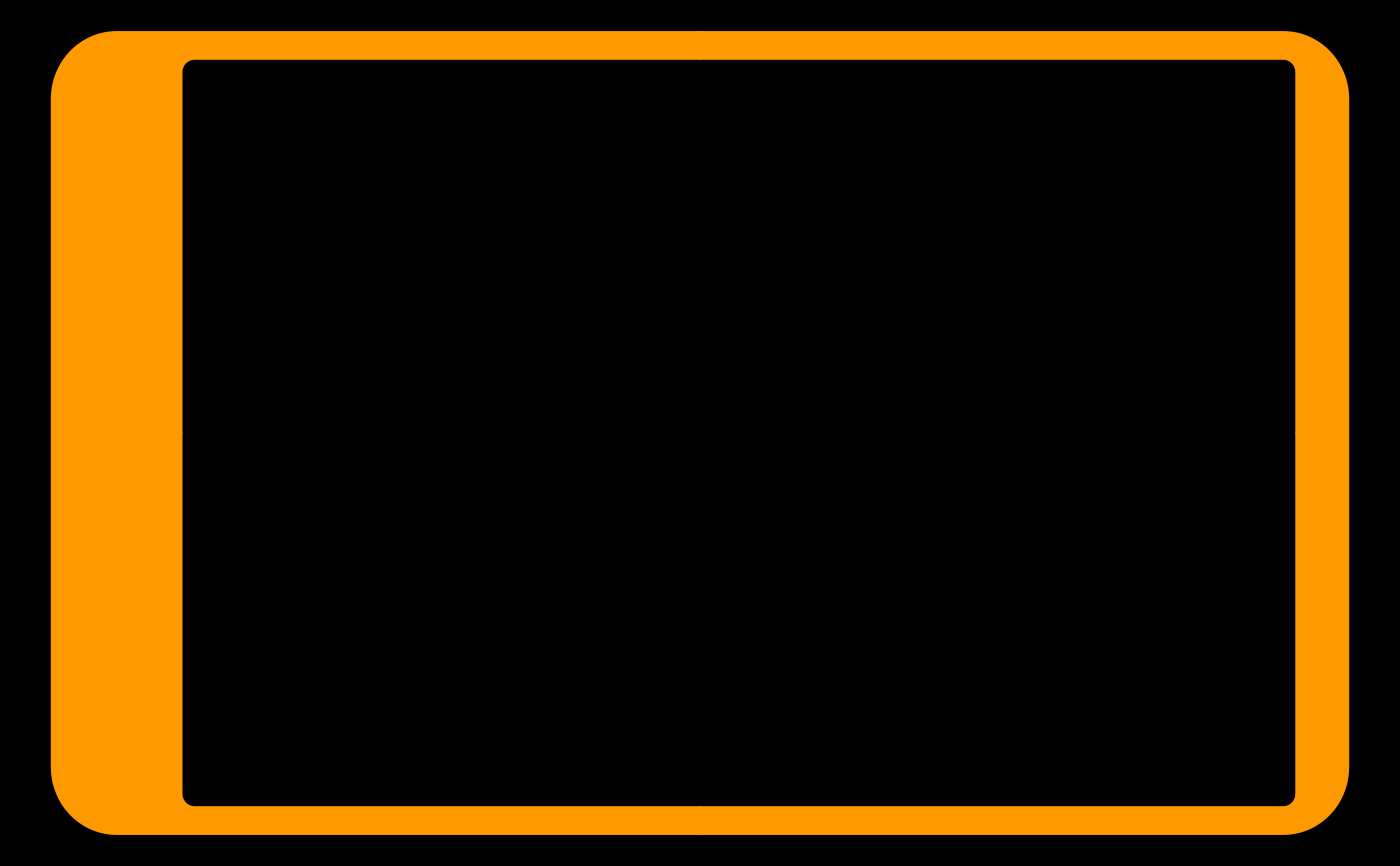Wrap a ggplot object with an LCARS-themed border or only plot the border.
lcars_border(
x = NULL,
width = 10,
height = 6,
corners = 1:4,
length_frac = rep(0.5, 8),
corner_color = rep("atomic-tangerine", 4),
ro = width/20,
ri = height/60,
side_width = c(1, 2, 1, 5)/5,
side_n_segments = rep(0, 4),
side_color = as.list(rep("atomic-tangerine", 4)),
side_label = rep(NA, 4),
label_size = 1,
side_label_adj = list(c(0.5, 0.5), c(-0.2, -0.2), c(0.5, 0.5), c(1.1, -0.2)),
gap = c(0.02, 0.01),
bg = "black",
n = 20
)Arguments
- x
optional inset ggplot object.
- width
full plot width in inches.
- height
full plot height in inches.
- corners
integer,
1:4, a vector specifying which corner elbows to include the LCARS elbow bend: top left, top right, bottom right, bottom left.- length_frac
numeric, the fraction of a side that a corner extends over. See details.
- corner_color
vector of corner colors, clockwise from top left. Can be any color given in hex format. Named colors must be LCARS colors. See lcarsdata for options.
- ro
vector of corner outer radii, clockwise from top left.
- ri
vector of inner outer radii, clockwise from top left.
- side_width
width of each side, clockwise from top left.
- side_n_segments
for each side clockwise from top left, the number of rectangle segments used to evenly fill the space between corner bends.
- side_color
list of color vectors for side segments. Each vector must have the same number of colors as the number of segments for a given side. Can be any color given in hex format. Named colors must be LCARS colors. See lcarsdata for options.
- side_label
list of label vectors for side segments. Each vector must have the same number of colors as the number of segments for a given side.
- label_size
numeric, global label text size.
- side_label_adj
list of four vectors, each giving the
adjargument totextfor each side.- gap
vector of two values giving the gap fraction from 0 to 1, based on full plot width and height, for the gap between horizontal and vertical segments, respectively.
- bg
background color, should be left black for LCARS standard.
- n
integer, number of points used to define inner radii quarter circles for corner bends.
Value
draws a plot
Details
This function draws a plot. It does not return a new ggplot object.
For length_frac, a vector of eight values from 0 to 1 is required.
Starting from the top side, clockwise around to the left side,
they refer to fraction of that side's length over which the relevant corner
bend extends.
For example, the first value refers to the top left corner bend's rightward
horizontal segment.
The second value refers to the top right corner bend's leftward horizontal
segment. This takes care of the top side.
Finally, the last value refers to the downward vertical arm of the top left
corner bend.
All arguments that take vectors or lists of length four are in clockwise order from either the top left corner for corner-related arguments or the top side for side-related arguments. Colors may be given as official LCARS color names.
Examples
lcars_border()
 sw <- seq(0.2, 2, length = 4)
lcars_border(width = 5, height = 5, ro = sw, ri = sw / 2, side_width = sw)
sw <- seq(0.2, 2, length = 4)
lcars_border(width = 5, height = 5, ro = sw, ri = sw / 2, side_width = sw)
 len_frac <- c(0.3, 0.5, 0.2, 0.4, 0.3, 0.2, 0.1, 0.3)
n_seg <- c(1, 2, 0, 8)
library(ggplot2)
g <- ggplot(iris, aes(Sepal.Length, Sepal.Width, color = Species)) +
geom_point() + facet_wrap(~Species, 2) + theme_lcars_light()
lcars_border(g, corners = 1:3, length_frac = len_frac, side_n_segments = n_seg)
len_frac <- c(0.3, 0.5, 0.2, 0.4, 0.3, 0.2, 0.1, 0.3)
n_seg <- c(1, 2, 0, 8)
library(ggplot2)
g <- ggplot(iris, aes(Sepal.Length, Sepal.Width, color = Species)) +
geom_point() + facet_wrap(~Species, 2) + theme_lcars_light()
lcars_border(g, corners = 1:3, length_frac = len_frac, side_n_segments = n_seg)
